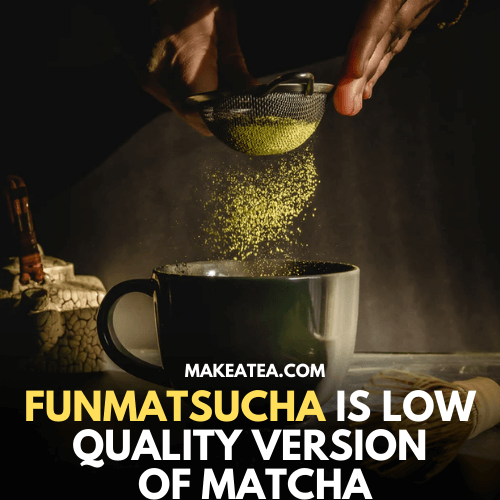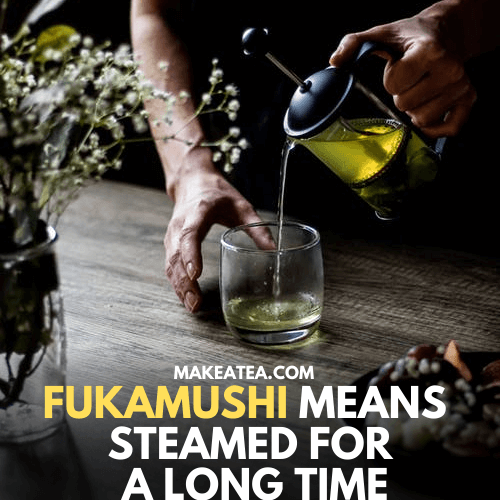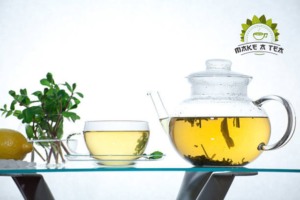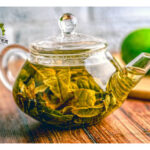Spending a quiet afternoon reading a book or quality time with your loved one’s both are great. But a cup of green tea will make this experience even better & healthier.
There are hundreds of exciting possibilities to explore when it comes to choosing green tea.
Don’t get overwhelmed with a lot of types of green tea again.
Let us disclose to you all types of green teas out there with their amazing benefits and you can decide which one has the flavors to excite your taste buds.
Why Are There Different Types of Green Tea?
Green Tea Comes from different parts of world and have different flavors. Hence on the basis of regions and flavor experts has categorized green tea into different types.
Some green teas are grown in shaded regions while others are grown in sunny areas.
These green teas all come from the same plant and after picking the leaves they go through different methods of steaming and frying.
All this process is done quickly within a certain period to stop the oxidation of green tea leaves. These processes are different in different countries.
Thus, different types of green tea are invented. Some are dried and curly; others are fresher and kept in natural shape.
13 Popular Types of Green Tea Around The World
There are hundreds of types of green tea available, most of them still unknown to the world. Most of them originated and comes from China and Japan.
So, we will discuss the most popular type of green tea from these regions. This will also include their taste, color, processing methods, benefits, etc.
1) Sencha Green Tea
Sencha is a widely available and common green tea consumed around the world. The properties and processing of Sencha are as follows.
Where is it from?
Sencha is a popular drink in Japan.
How is it Processed?
It is grown under direct sunlight. These are the youngest leaves that are steamed after picking.
The tea leaves are then hand-rolled and dried.

Leaves and Color
Sencha leaves are bright green. The manufacturers take pointed leaves for Sencha tea because they have to be rolled usually by hand.
The color of the tea after brewing is yellowish to light yellow.
Flavor & Aroma
It has an intense flavor that is astringent and sweet. The after-taste is deep and long-lasting. The aroma of Sencha green tea leaves is refreshing, green and grassy.
Benefits of Sencha
It is considered a healthy drink because of the ample Vitamin C in it. Sencha tea helps in boosting immunity and fights the common cold. This also relieves stomach pain and is good for period cramps in women.
Added Information
Water temperature – 70°C (158°F)
2) Hojicha Green Tea
Hojicha is a widely available and common Japanese green tea. The properties and processing of Sencha are as follows.
Where is it from?
This tea comes from Japan.
Methods Used
Hojicha can not be prepared in the absence of Sencha Green Tea. It is prepared from Sencha but through the roasting process.
The leaves of Sencha are roasted at 200 degrees Celsius. During this process, caffeine is gone from the leaves. Thus, Hojicha is created.
Aroma & Flavor
The taste of this tea is slightly bitter and light and has a savory aroma because of the roasting process.
Leaves and Color
The color turns different shades of brown when brewed. The leaves are the darker shade of Sencha.
Benefits of Hojicha
It has the same benefits as Sencha as it comes from Sencha leaves. It helps in increasing the body’s immune system and assists in fighting the common cold.
Additional Information
Water temperature – 95°C (203°F)
3) Gyokuro Green Tea
The properties and processing of Gyokuro are as follows
Where is it from?
Gyoruko is a green tea that is cultivated in a few regions of Japan. It is a difficult tea to cultivate and thus is an expensive and quality green tea.
Methods Used
After the processing, the method used to make this tea is similar to Sencha in heating and frying methods.
Gyokuro tea bushes are shaded with cloth or reed screen around three weeks before picking. Because of restricted sunlight, the generation of catechins from amino acids is suppressed.
Aroma & Taste
This tea has a seaweed aroma and taste. People compare it to nori seaweed. It has the after taste like seaweed and spinach.
Leaves & Color
The leaves are a darker green shade. Leaves are not pointy but wide. The color of liquid Hyokuro is pale yellow.
Benefits of Gyokuro
This green tea is rich in caffeine and chlorophyll. These compounds are best for brain functions and the nervous system. It is best for tissue and cell growth. Thus, this green tea is best for the skin.
Additional Information
Water temperature – 40°C (104°F)
4) Tencha Green Tea
Green tea leaves are not kept under direct sunlight and are covered. This blocks the sunlight. Therefore, Raw leaves are used for this tea and it is high in caffeine.
Where is it from?
Japan.
Methods Used
This tea is similar to the processing methods of Gyoruku. The difference is that the coverage period is longer than the standard 20 days.
After steaming, the leaves are dried without being rolled. This step determines the price of green tea leaves from the different types of green tea.
Aroma & Taste
The taste is deep and mellow because of the high mineral content. It has a notable subtle aroma. And the aftertaste is sweet and lasting.
Leaves and Color
The Tencha leaves are used without roots and stems. These tea leaves do not undergo and rolling process. Leaves are bright green.
Benefits
Tencha leaves leave release high levels of minerals and vitamins. It refreshes your mind and is good for hair because the high caffeine and minerals are great for hair follicles.
Additional Information
Water temperature – 40°C (104°F)
5) Matcha Green Tea
Matcha green tea is famous for its powdered form and high quality. The properties of matcha green tea are as follows.
Where is it from?
Japanese green tea.

Methods Used
Green tea leaves are in the form of powder. Therefore, matcha is available in powdered form and not tea leaves. It has two types of green tea. One is ceremonial grade matcha and Culinary grade.
Aroma & Taste
Ceremonial grade matcha has bright green color, rich aroma. The taste of Matcha is strong. Therefore, other method uses matured leave and have bitter taste.
Leaves and Color
The color after brewing is vivid green.
Benefits Of Matcha Green Tea
Matcha green tea is one of the most beneficial green teas. It is high quality protects your liver, boosts brain functions, and is nutrient-dense.
It is best for weight loss and body detoxification.
Additional Information
Water temperature – 80°C (176°F)
6) Funmatsucha Green Tea
It is known for its low price and bitter flavor.
Where is it from?
It is a Japanese harvested micron green tea.
Methods Used
These tea leaves are ground into a powder form like Matcha but unlike matcha, they aren’t high-quality leaves.
Thus, the low price. During the processing period, these tea leaves remain full time in the sun, and due to absorbing a lot of sunlight, they get a bitter and astringent taste.
Aroma & Taste
It has an earthy aroma and a very bitter taste. Not everyone can sip it easily. It is a bitter version of Sencha.
Leaves and Color
Funmatsucha has a much darker color compared to Gyokuro. It’s in a powdered form like Matcha, however, it lacks the bright green color.
Benefits
Funmatsucha has a lot of antioxidants in comparison with other green teas. Therefore, this tea fights against diseases like cold, flu, headaches, etc. This is a bitter tea but acts as a diuretic and takes all the toxins out of your body.

Additional Information
Water temperature – 80°C (176°F)
7) Konacha or Agari Green Tea
Konacha tea is known to be the tea of sushi restaurants. Interestingly konacha means powder tea but this tea is not in powder form but is tea leaves.
Where is it from?
It is originated in Japan.
Methods Used
All Japansess teas are interlinked. Konacha is made after the process of Gyokuro and Sencha is done and small bits of leaves are filtered out. These filtered out leaves are bulkier in size than any other tea.
Aroma & Taste
It has a bitter and astringent flavor. The after-taste is described by green tea lovers as raw and spicy green.
Leaves and Color
The leaves are bulkier and brewed tea is darker greenish shade.
Benefits
It is higher in the beneficial catechins. Hence it helps in heart diseases, diabetes, etc. Also drinking this tea early morning will aid in weight loss and boosts overall health.
Additional Information
Water temperature – 75°C (167°F)
8) Kabusecha Green Tea
Kabusecha Green Tea Leaves is usually referred to as a hybrid of sencha and Gyokuro, giving it uniqueness among various types of tea.
Where is it from?
Japan
Methods Used
Kabusecha is produced by the covering method. These leaves are only covered for 7 days and straw blankets are used to do so.
This enables the shoots to acquire a dark green color and less astringency than Sencha.
Aroma & Taste
It has a soothing aroma with a mild umami flavor. The after-taste is described as sweet and refreshing.
Leaves and Color
Kabusecha has full-bodied leaves that are dark green. The liquor when brewed is yellowish-green.
Benefits
It improves stomach-related issues, lowers cholesterol, and improves dental health.
Additional Information
Water temperature – 60°C (122°F)
9) Fukamushi cha
Another Japanese green tea Fukamushi means steamed for a long time.
Where is it from?
It is of Japanese origin.

Methods Used
It has leaves from Sencha, Gyokuro, Kabusecha, and Bancha. These are steamed longer, about three-four times more than the other teas. Thus, it gives deeper color and brew.
Aroma & Taste
These tea leaves have richer flavor due to no moisture and oxidation. It is less astringent than sencha. It has a mild and mellow taste.
Benefits
The compounds absorb in the body which provides you with more nutrients and thus a healthier body.
Additional Information
Water temperature – 70°C (158°F)
10) Hōjicha
A Japanese green tea that is derived from other green teas.
Where is it from?
Originated from other varieties of Japanese green teas.
Methods Used
Hojicha is prepared by toasting the tea leaves themselves in a porcelain pot over charcoal. Old green tea leaves are not thrown rather roasted and form a new tea with roasty aroma.
Aroma & Taste
It has a roasty aroma. When brewed you get a mellow, nutty flavor similar to the toasty flavor of a genmaicha blend.
Benefits
The catechins found in this tea are good for metabolism, weight loss, burning fat, and best digestion.
Additional Information
Water temperature – 82 °C (180 °F)
11) Longjing or Dragon Well
Longjing translates to dragon well.
Where is it from?
This green tea originated in China. Named after a village called Longjing village.
Methods Use
This green tea is grown in sunny area.
Aroma & Taste
It has a sweet and mild flavor with after taste of chestnut.
Benefits
Longjin has about 48mg of caffeine due to this it has the potential and the best green tea brand for weight loss.
It is also amazing for heart health and relieves stress and anxiety. A pregnant woman can take this tea in moderate amounts.
Additional Information
It keeps your blood pressure and cholesterol at bay.
12) Biluochun
Grown in the Dongting mountain region near Lake Tai, Jiangsu, the biluochun. This tea has origins in China.
Methods Used
The design used in rolling green tea leaves resembles the snail.
Aroma & Taste
It is has a delicate appearance with distinct white hairs. It tastes fruity and has a floral aroma.

Color and Leaves
The leaves of this tea have a very special design. They are spiral which resembles snails.
Benefits of Biluochun
This green tea is rich in Vitamin C. It promotes blood circulation, good for blood pressure, kidney-related issues, and heart diseases.
Additional info
Keep water temperature to 175°F / 80°C and steep for just 1-2 minutes.
13) Chun Mee
Known in English by its Cantonese name, and popular outside China.
Where is it from?
It is a Chinese green tea that means precious eyebrows. Chun mee was originally produced only in the Chinese Jiangxi province but is now produced all over China.
Methods Used
This tea has a lot of variations. The highest one has the fine quality and the lowest one just has broken leaves.
Aroma & Taste
It has a plum-like flavor. bright flavor, light tangy sweetness, and a toasty warm clean finish. You can drink it in the morning or late at bedtime.
Benefits
This tea is low in caffeine and high in calcium and Vitamin C. It makes it the best green tea for kids. They will love the flavor and it promotes healthy teeth and bones.
Additional Information
Keep water temperature to 175°F / 80°C.
Conclusion
All these types of green tea provide a lot of healthy nutrients and benefits to our body. Some are healthiest while others are more famous for their taste and aroma.
Including green tea in your routine early morning or at bedtime, is a wise step for your better health. Choose among our list and buy yourself some green tea to brew at home.







